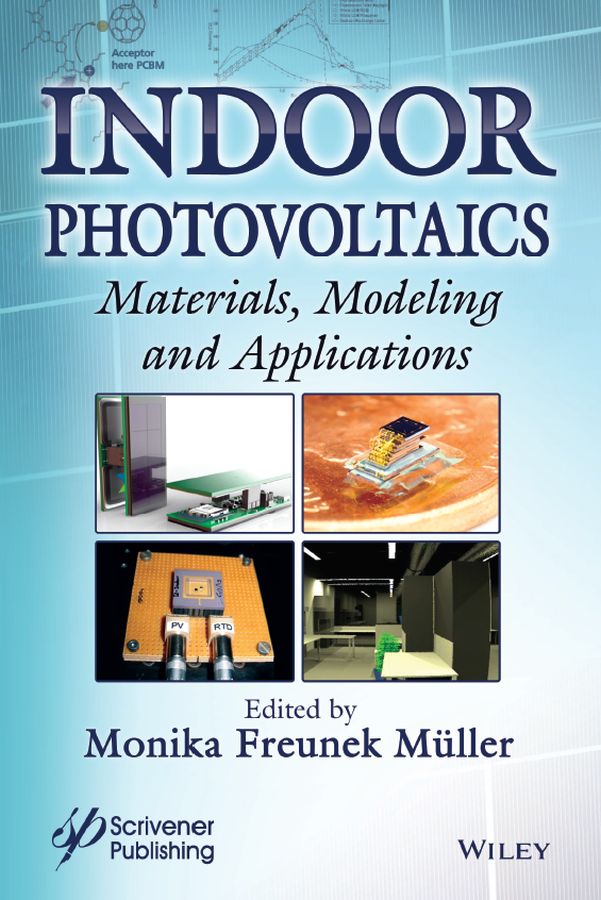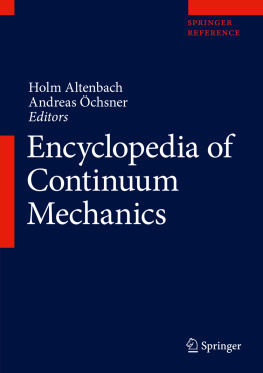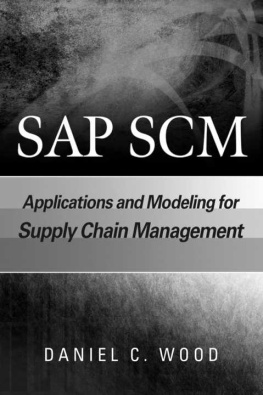Müller Monika Freunek - Indoor Photovoltaics: Materials, Modeling and Applications
Here you can read online Müller Monika Freunek - Indoor Photovoltaics: Materials, Modeling and Applications full text of the book (entire story) in english for free. Download pdf and epub, get meaning, cover and reviews about this ebook. year: 2020, genre: Home and family. Description of the work, (preface) as well as reviews are available. Best literature library LitArk.com created for fans of good reading and offers a wide selection of genres:
Romance novel
Science fiction
Adventure
Detective
Science
History
Home and family
Prose
Art
Politics
Computer
Non-fiction
Religion
Business
Children
Humor
Choose a favorite category and find really read worthwhile books. Enjoy immersion in the world of imagination, feel the emotions of the characters or learn something new for yourself, make an fascinating discovery.

- Book:Indoor Photovoltaics: Materials, Modeling and Applications
- Author:
- Genre:
- Year:2020
- Rating:3 / 5
- Favourites:Add to favourites
- Your mark:
- 60
- 1
- 2
- 3
- 4
- 5
Indoor Photovoltaics: Materials, Modeling and Applications: summary, description and annotation
We offer to read an annotation, description, summary or preface (depends on what the author of the book "Indoor Photovoltaics: Materials, Modeling and Applications" wrote himself). If you haven't found the necessary information about the book — write in the comments, we will try to find it.
Indoor Photovoltaics: Materials, Modeling and Applications — read online for free the complete book (whole text) full work
Below is the text of the book, divided by pages. System saving the place of the last page read, allows you to conveniently read the book "Indoor Photovoltaics: Materials, Modeling and Applications" online for free, without having to search again every time where you left off. Put a bookmark, and you can go to the page where you finished reading at any time.
Font size:
Interval:
Bookmark:

- Chapter 3
- Chapter 4
- Chapter 6
- Chapter 8
- Chapter 9
- Chapter 2
- Chapter 3
- Chapter 4
- Chapter 5
- Chapter 6
- Chapter 7
- Chapter 8
- Chapter 9
Scrivener Publishing
100 Cummings Center, Suite 541j
JBeverly, MA 01915-6106
Publishers at Scrivener
Martin Scrivener ()
Phillip Carmical ()
Edited by
Monika Freunek Mller

This edition first published 2020 by John Wiley & Sons, Inc., 111 River Street, Hoboken, NJ 07030, USA and Scrivener Publishing LLC, 100 Cummings Center, Suite 541J, Beverly, MA 01915, USA
2020 Scrivener Publishing LLC
For more information about Scrivener publications please visit www.scrivenerpublishing.com.
All rights reserved. No part of this publication may be reproduced, stored in a retrieval system, or transmitted, in any form or by any means, electronic, mechanical, photocopying, recording, or otherwise, except as permitted by law. Advice on how to obtain permission to reuse material from this title is available at http://www.wiley.com/go/permissions.
Wiley Global Headquarters
111 River Street, Hoboken, NJ 07030, USA
For details of our global editorial offices, customer services, and more information about Wiley products visit us at www.wiley.com.
Limit of Liability/Disclaimer of Warranty
While the publisher and authors have used their best efforts in preparing this work, they make no representations or warranties with respect to the accuracy or completeness of the contents of this work and specifically disclaim all warranties, including without limitation any implied warranties of merchantability or fitness for a particular purpose. No warranty may be created or extended by sales representatives, written sales materials, or promotional statements for this work. The fact that an organization, website, or product is referred to in this work as a citation and/or potential source of further information does not mean that the publisher and authors endorse the information or services the organization, website, or product may provide or recommendations it may make. This work is sold with the understanding that the publisher is not engaged in rendering professional services. The advice and strategies contained herein may not be suitable for your situation. You should consult with a specialist where appropriate. Neither the publisher nor authors shall be liable for any loss of profit or any other commercial damages, including but not limited to special, incidental, consequential, or other damages. Further, readers should be aware that websites listed in this work may have changed or disappeared between when this work was written and when it is read.
Library of Congress Cataloging-in-Publication Data
ISBN 978-1-119-60559-1
Cover image: Top right: GaAs photovoltaic array integrated on a microsystem, placed on top of a US penny. Photo by Inhee Lee and Eun Seong Moon, University of Michigan
Other images provide by the Editor
Cover design by Russell Richardson
Indoor photovoltaics (IPV) has grown in importance over recent years. This can in part be attributed to the creation of the Internet of Things (IoT) and Artificial Intelligence (AI) along with the vast amounts of data being processed in the field, which have been a massive accelerator for this development. Moreover, since energy conservation is being imposed as the national strategy of many countries and is being set as a top priority throughout the world, understanding and promoting IPV as the most promising indoor energy harvesting source is considered by many to be essential these days.
There are many contributing factors as to why this book is so special. First of all, I would like to deeply thank all the authors from around the world who found the time to contribute chapters on top of their world-class research, industrial work, and the launch of companies, projects and actual rockets. The book has exceeded my expectations in many ways. Not only did we manage to cover all topics that are essential for building an IPV device, but this book actually contributes to the research in the field. It has yielded collaborations among the chapter authors and the research community, many of which will hopefully be a seed for long-lasting and growing collaborations. Many chapters contain original research that was performed solely for this book, and some chapters contain work that is being published for the first time for a larger audience. On top of all that, the book was already in steady demand even during its writing.
Finally, I would like thank my publisher, Martin Scrivener, for his great and always helpful support, and Jean Markovich, who did outstanding work in copyediting the chapters. I am most grateful for this opportunity and the joy this work brings.
I hope, you, the reader, will find this book helpful in designing and understanding your IPV system.
Monika Freunek Mller
Bern, Switzerland, August 2020
Will Photovoltaics Stay Out of the Shadows?
Joseph A. Paradiso
MIT Media Lab, Cambridge, Massachusetts, USA
Abstract
Advances in ultra-low-power electronics capable of useful applications have caused interest in energy harvesting to balloon in recent years. When needed power drops to the point where harvesting is feasible, however, an embedded battery presents serious competition for many use cases, and the particulars tend to rapidly become niche-driven, as they depend on the ambient energy environment that the system experiences. Photovoltaics have long been a popular energy harvesting option, and recent developments expand their opportunities for low-light indoor applications.
Keywords: Indoor photovoltaics, energy scavenging, low-power electronics, human-powered systems, Internet of Things
Im going to start this book introduction with a confession. Although Im known for developing a variety of energy harvesting approaches and implementations dating back a couple of decades now, Ive never actually really used any of them. Yes, we and others back then and since [], but nothing has hit even close to the mainstream or for that matter even established a strong niche market. The dream of capturing energy from human motion is an opium to the public that hearkens to the appealing magic of perpetual motion machines since there is an eagerness to see this kind of invention. But when the rubber meets the road, even though ingenious implementations have been designed, nothing has gained much traction.
This is for a variety of reasons. One is physical; living bodies are evolved to conserve their energyour tendons act as springs while walking to store and release ambulant power, and our vascular system constricts to avoid excessive heat loss. Hence, pulling significant power from moving or walking can become tiring, and large-area thermoelectrics can feel cold. Another is expense and complication. Building harvesters into shoes, where most tappable human energy resides, can get pricey and can interfere with footwear designs that are already finely optimized for their purpose (walking, running, climbing, etc.). The complication involved in large mechanical harvesters also introduces fragility; again, going back to the shoe, such devices always break there well before the shoe is worn out. Then there is the issue of power distribution; without wiring the body or clothing, the energy needs to be used where it is harvested. Although you can perhaps glean a good fraction of a Watt from a shoe, its hard to use it there; the power needs to be transported to a smart AR headset, for example, where that level of energy would be welcomed (ditto for pretty much any kind of mechanical harvesteryou need to tap limb motion or the inertial reaction of a heavy mass in a backpack [] to get to this power level). Sure, you could charge a battery in your shoe and move itpeople have implemented this several times. But even with multiple wearable devices, the convenience of powerline charging them, at least in the wired world, has well outpaced this strategy.
Next pageFont size:
Interval:
Bookmark:
Similar books «Indoor Photovoltaics: Materials, Modeling and Applications»
Look at similar books to Indoor Photovoltaics: Materials, Modeling and Applications. We have selected literature similar in name and meaning in the hope of providing readers with more options to find new, interesting, not yet read works.
Discussion, reviews of the book Indoor Photovoltaics: Materials, Modeling and Applications and just readers' own opinions. Leave your comments, write what you think about the work, its meaning or the main characters. Specify what exactly you liked and what you didn't like, and why you think so.









